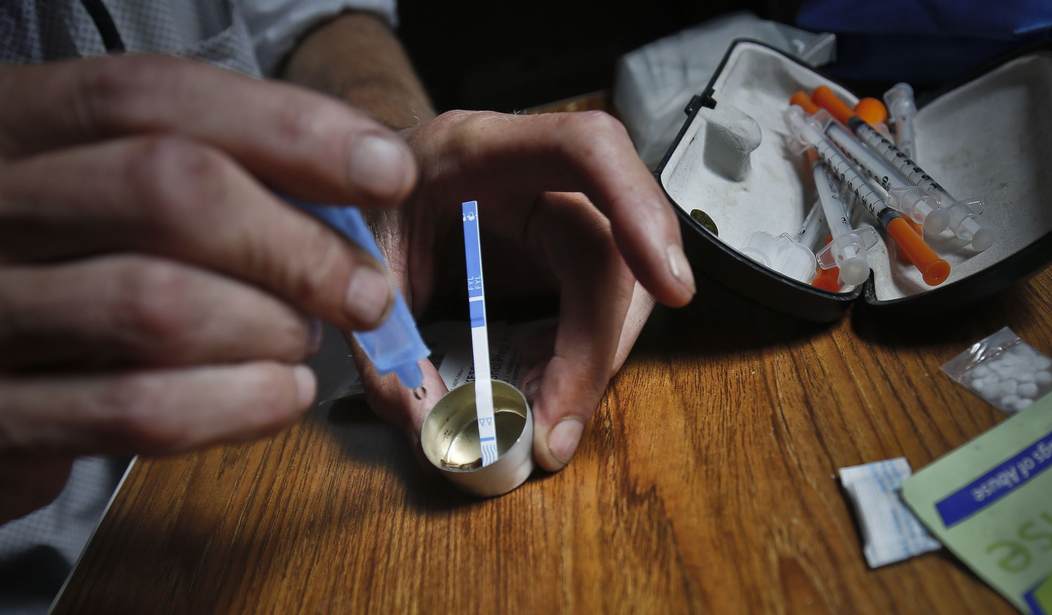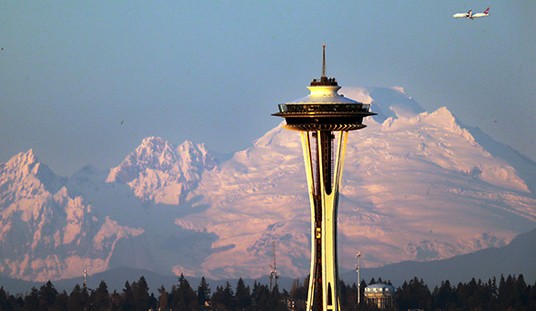Addiction experts are used to gory increases in the yearly toll of OD deaths but even they’re shocked by the surge captured in today’s new CDC data. “That is just an astounding number,” said one of Obama’s drug czars to Politico of the death figures recorded in 2020. “It takes my breath away, honestly.” A psychiatry professor at Stanford told WaPo it was “terrifying. It’s the biggest increase in overdose deaths in the history of the United States, it’s the worst overdose crisis in the history of the United States, and we’re not making progress. It’s really overwhelming.” Yet another academic called it “a stunning number even for those of us who have tracked this issue.”
John anticipated today’s CDC release in a post last month when he wrote about a study published in a medical journal estimating a massive increase in overdose deaths in 2020. That study found a 28.8 percent rise in ER visits due to opioid ODs, a figure that ended up closely tracking the increase in deaths recorded by the CDC. Overdose fatalities surged from 70,980 in 2019 to 93,331 last year, a 31.5 percent spike, despite having leveled off between 2017 and 2019. Social changes wrought by the pandemic conspired to reverse an encouraging trend:

In a sense that graph is misleading, though. It shows overdose deaths from all drugs, but not all drugs are contributing equally to the rash of fatalities. In fact, really only one drug is, which this second graph makes clear:

America doesn’t have a “drug overdose” epidemic, it has a fentanyl overdose epidemic. Fentanyl, a synthetic opioid, is so fantastically potent that police need to take special precautions when encountering it at a crime scene so as to avoid accidentally overdosing themselves. A junkie using that drug is at perpetual risk of killing himself by misjudging the safe dose by the tiniest bit. Worse, some are overdosing on fentanyl without even realizing that they’re taking it:
Nora Volkow, head of the National Institute on Drug Abuse, said in an interview that fentanyl has so thoroughly infiltrated the illegal drug supply that 70 percent of cocaine overdose deaths and 50 percent of methamphetamine overdose deaths also involved fentanyl.
In many cases, she said, users are unaware that their drugs are laced with the powerful painkiller, which can halt breathing even if a minute amount is ingested. In others, users knowingly take multiple drugs.
“Most of the deaths are from multiple drugs,” she said.
The upward trend in overdose deaths from cocaine and meth (“psychostimulants with abuse potential”) in the second graph above may also be chiefly due to users not realizing that those drugs have been cut with fentanyl. “What’s really driving the surge in overdoses is this increasingly poisoned drug supply,” said a sociology professor to the AP. “Nearly all of this increase is fentanyl contamination in some way. Heroin is contaminated. Cocaine is contaminated. Methamphetamine is contaminated.”
As for why deaths surged during the pandemic, that appears to be a combination of demand, supply, and health-care outfits being distracted by more pressing priorities. The demand problem is obvious: As depression and anxiety rose due to layoffs and quarantine, some people were destined to seek refuge in drug abuse. It may be, in fact, that the reason suicides were surprisingly low last year is because drug ODs ended up being surprisingly high. Some cohort that might have succumbed to depression in time may have tragically poisoned themselves accidentally with fentanyl before they had the chance. “Overdose deaths reached a peak nationally in the spring of 2020, in the midst of the pandemic’s most severe period of shutdowns and economic contraction,” the NYT notes. Probably not a coincidence.
The supply problem is well known. “Fentanyl trafficking offenders have increased by 1,890.4% since fiscal year 2016,” the U.S. Sentencing Commission noted in a report this past April. Traditionally Chinese manufacturers have supplied the drug to the Sinaloa cartel, which then smuggles it across California’s border with Mexico. But according to the DEA, as the Chinese government has cracked down on some domestic fentanyl labs, the Mexican cartels have picked up the slack by producing their own. Their decision to start using fentanyl rather than opium as a base for heroin several years ago has been a key contributor to America’s OD epidemic, per former federal prosecutor Josh Jones. The supply into the U.S. may have been temporarily disrupted by lockdowns last spring, but one Missouri expert told the Times that there was a “huge influx” after a month or so, with the cartels doubtless eager to capitalize on people’s misery. That month off may have caused some addicts’ tolerance to drop too, making their reunion with fentanyl that much more dangerous.
Finally, lockdowns and voluntary social distancing last year plus the demands of coping with COVID meant that health-care personnel and addicts couldn’t connect as often, leaving some to spiral:
Understaffed local health departments that had been leading prevention and recovery efforts shifted to testing and tracing the coronavirus. Social service programs that relied on outreach and in-person visits were shut down, while inpatient treatment centers reduced the number of people they accepted to meet social distancing rules. Outpatient centers tried to sustain operations through virtual visits.
“It wasn’t just the political leaders not paying attention, it was the circumstances around Covid,” said Chuck Ingoglia, president and CEO of the National Council for Behavioral Health, a trade association for mental health and addiction treatment providers.
Social distancing may have denied addicts access to more than just prevention resources. One outreach expert told the Times that users are advised to do drugs around others if they intend to use rather than to do them alone so that someone can call 911 for them if they OD. The pandemic created a lot more alone time for everyone. Some addicts who might have been saved by paramedics or by a fellow user equipped with naloxone ended up dying because no one was around to intervene.
I’ll leave you with this grim statistic from the NYT. COVID killed nearly four times as many Americans as overdoses did last year but COVID tends to prey on the very old while addiction tends to prey on the young. Result: “In total, the 93,000 [OD] deaths cost Americans about 3.5 million years of life, according to a New York Times analysis. By comparison, coronavirus deaths in 2020 were responsible for about 5.5 million years of life.”








Join the conversation as a VIP Member